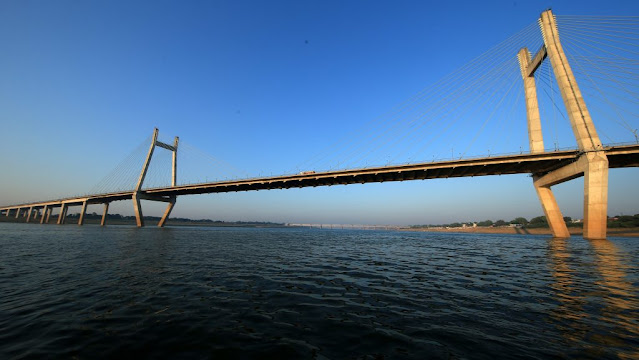best place to visit in october in india
Allahabad Museum
- The Allahabad Museum is centrally located in the Civil Lines area of the city in a lush green garden at Chandrashekhar Azad Park, popularly known as Company Bagh. In 1863, the Board of Revenue requested the Government of North- Western Provinces for the establishment of a public library and a museum. With donations from the provincial government, the famous Orientalist Sir William Muir and the Maharaja of Vijaynagaram, a superintendent of the library and museum was appointed and an ornate building was inaugurated in 1878 to house the collection. For unforeseen reasons or due to paucity of fund the museum was closed down in 1881. With the initiative of Pandit Jawaharlal Nehru, the President of the Allahabad Municipal Board and Pt.
- Brijmohan Vyas in the 1923-24 efforts were made to establish a new museum in the city. It was under the operational direction of Pandit Brij Mohan Vyas, the executive officer of the board, a museum was opened in the Municipal Building in 1931. Under the tutelage of Pandit Vyas, the museum acquired important collections, including ancient sculptures from Bharhut and Bhumra as well as the art collections of Abanindranath Tagore, Jamini Roy, Gaganendranath Tagore, Asit Kumar Haldar of the Bengal School Paintings also the collection of paintings of the European artists like Nicholas Roerich and Anagarik Govinda, a German monk whose collection enabled the museum to create galleries of modern art in the museum. In 1942, S.C. Kala the first curator gave the much needed impetus to enriching the collections of the museum, especially adding the Nehru Personalia Collection and as space became a constraint, it was decided that the museum should be shifted from the Municipal Board building to a new premises. The foundation stone of the present museum building was laid on 14th December 1947 by Pandit Jawaharlal Nehru and the museum was opened to the public in 1954 in the Chandra Sekhar Azad Park or the company bagh area. But the real turning point of the fate of the museum came in the year 1986 after realizing its significance of the diversity of its rich collections of archaeological artifacts, art treasures the museum was taken over by the Ministry of Culture, Government of India after constituting an autonomous body called Allahabad Museum Society, and declared it a museum of national importance under the Ministry of Culture Government of India. Presently the museum is under the financial control of the Ministry of Culture, Government of India and the ex-officio Chairman of the museum is the Governor of Uttar Pradesh.
- The Allahabad Museum has a rich and diversified collection of art, antiquities, paintings ,sculptures, coins, ceramics, archaeological objects, illustrated manuscripts, farmans, decorative art objects, arm & armours, textiles, natural history specimen, photographs , prints and personalia collections pertaining to Gandhi, Nehru and Literary personalities of Allahabad like Sumitra Nandan Pant,Suryakant Tripathi “Nirala”, Premchand, and Mahadevi Verma. The artefacts are displayed in sixteen different galleries including an Exhibition named in the memory of A.K. Coomaraswamy Memorial Hall and a Central hall where from time to time various temporary exhibitions on different themes are organised for the rotation of art objects and antiquities from the reserve collection of the museum.
The New Yamuna Bridge
- The New Yamuna Bridge is like a new feather in Prayagraj’s cap. The images speak about the stupendous architecture of the New Yamuna Bridge. The view of the bridge during dawn and dusk is mesmerizing.
- Also known as the Naini Bridge, the New Yamuna Bridge is among India’s longest cable-stayed bridges. It runs across the Yamuna River in the North-South direction, connecting Prayagraj to Naini. It was constructed in the year 2004 to minimize the traffic congestions over the old Naini Bridge. The construction of the bridge was a joint responsibility of the Hindustan Construction Company and Hyundai Engineering and Construction.
- The New Yamuna Bridge is also the first six-lane bridge in India built with modern design and structure. It has two pylons, made up of concrete material, that provide support to the major part of the deck of the bridge held together by steel cables. The bridge also acts as a road link between Prayagraj and NH-27 stretching across for 370 meters. The modern technology combined with environmental compatibility and excellent quality make for some of the features of this bridge that offer great benefits. India has a stupendous network of bridges and this bridge is a fine example of the country’s tremendous growth in infrastructure.
- Experience the comfort of modern-day technologies while passing through the New Yamuna Bridge!
Khusro Bagh
- Khusro Bagh is a large historical garden, in which tombs of Prince Khusro, the eldest son of Emperor Jahangir and Sultan Begum are located. The three sandstone mausoleums within this walled garden, represent an exquisite example of Mughal architecture. The design of its main entrance, the surrounding gardens and the three-tier tomb of Sultan Begum has been attributed to Aqa Reza, Jahangir’s principal court artist.
- The tomb has a large chhatri that surmounts the plinth and inscriptions that adorn her tomb. Next to the Begum’s tomb is the tomb of Khusrau’s sister, Nithar. However Nithar’s mausoleum is empty and it does not contain her tomb within it. Architecturally, this is the most elaborate of the three. It lies on an elevated platform and is adorned with panels depicting the scalloped arch motif. Within the plinth are rooms, whose ceilings have been elaborately painted with stars in concentric circles. The central room has on its walls floral decorations depicting Persian cypresses, wine vessels, flowers and plants.
- The tomb of Khusro is the last of the three tombs. Khusro was first imprisoned within the garden after he rebelled against his father Jahangir. He was killed in an attempt to escape on the orders of Khusro’s brother and Jahangir’s third son Khurram, who later became the Emperor Shah Jahan.






Comments